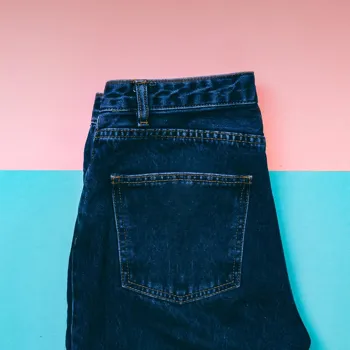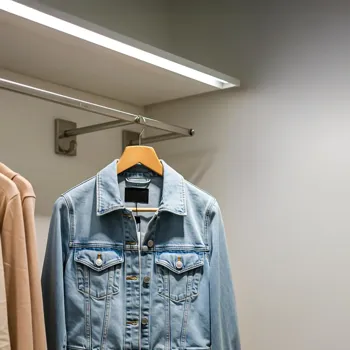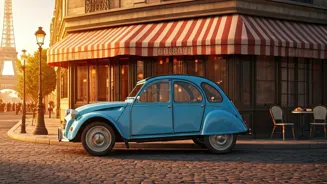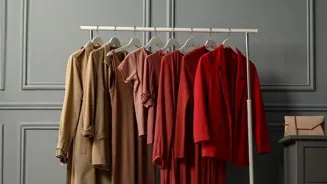Discover the captivating evolution of denim from workwear to high fashion. Unveil its rich history & future trends!
Denim, that sturdy fabric we all know and love, has come a long way baby! From its humble
beginnings as tough workwear for miners and labourers, it has now sashayed its way onto the ramps of high fashion and into the wardrobes of almost everyone.

This is the story of how denim transformed itself from practical pants to a global fashion icon. It’s a journey filled with innovation, cultural shifts, and a whole lot of style. Let’s delve into the fascinating past, present, and future of this beloved blue fabric.
Denim's rugged roots in 19th-century workwear revolutionize fashion
Denim's story starts way back in the 19th century. Imagine, prospectors were searching for gold, and railway workers were laying down tracks across the American West. These fellows needed clothes that could withstand hard wear and tear.
That's where Levi Strauss, a German immigrant in San Francisco, stepped in. Working with tailor Jacob Davis, they patented the process of using copper rivets to reinforce stress points on work pants. Voila! The first pair of blue jeans was born.
This innovation was a game-changer, creating overalls that were much tougher than other options at the time. These riveted pants quickly became the go-to uniform for those rugged jobs.
The indigo dye, which gave the jeans their signature blue colour, was chosen because it was inexpensive and masked dirt well. The original design also featured a watch pocket, reflecting the practical needs of its wearers.
The denim used was originally a heavy-duty fabric sourced from Nimes, France, hence the name "de Nimes" which eventually became "denim". These early jeans were all about durability and functionality, with little thought given to fashion or style.
They were simply a hardworking garment built to last. But their incredible resilience and practical design laid the foundation for the denim revolution that was about to unfold.
Denim's evolution from workwear to symbol of youth rebellion
The 20th century saw denim slowly move beyond the realm of workwear. In the early decades, cowboys and ranchers adopted jeans, further solidifying their association with the American West and a sense of rugged individualism.

Western movies played a major role in romanticising the image of the cowboy in denim, making it a symbol of freedom and adventure. Soon, denim started trickling into mainstream fashion.
During World War II, jeans became more widely available due to their practicality and availability as work clothes for women entering the workforce. After the war, the rebellious youth adopted jeans as a symbol of counter-culture.
Actors James Dean and Marlon Brando famously wore jeans in their movies, associating them with a cool and rebellious attitude. This association sparked a new wave of denim popularity among young people, who saw it as a way to express their individuality and challenge the norms of society.
Denim was no longer just for workers; it was for anyone who wanted to make a statement. This period marked a significant turning point in denim's journey, setting the stage for its future as a versatile fashion staple.
Denim's evolution from workwear to fashion staple in 20th century
The latter half of the 20th century witnessed denim exploding into a global phenomenon. The 1960s and 70s saw the rise of bell-bottom jeans, a direct reflection of the free-spirited and experimental fashion trends of the era.
Designers began experimenting with different washes, dyes, and treatments, transforming denim into a canvas for creativity. The rise of rock and roll also contributed to denim's growing popularity.
Musicians like the Rolling Stones and Bruce Springsteen frequently sported jeans, further associating them with youth culture and rebellion. Designer denim emerged in the 1970s, with brands like Calvin Klein and Gloria Vanderbilt showcasing their own high-fashion denim lines.
This marked a shift from denim as a basic workwear garment to denim as a status symbol. The 1980s brought acid wash jeans and ripped denim, further pushing the boundaries of what was considered fashionable.
By the end of the century, denim had firmly established itself as a versatile and essential part of any wardrobe, capable of being dressed up or down for any occasion.
Denim evolution in 21st century: diverse, innovative, sustainable
The 21st century has seen denim continue to evolve and adapt to changing fashion trends. Skinny jeans became a dominant force in the early 2000s, followed by a resurgence of wider leg styles.

Sustainability has also become a major focus, with brands exploring eco-friendly production methods and materials like organic cotton and recycled denim. Technology is also playing a role, with innovations like stretch denim providing increased comfort and flexibility.
We are seeing collaborations between denim brands and high-fashion designers, resulting in unique and innovative denim pieces. The rise of athleisure has also influenced denim trends, with the introduction of jogger jeans and other comfortable, athletic-inspired styles.
Customisation and personalisation have become increasingly popular, with many brands offering options for custom-made jeans and personalised denim jackets.
Overall, the 21st century has seen denim embrace diversity, innovation, and sustainability, ensuring its continued relevance in the world of fashion.
Denim evolves: sustainable, innovative, customizable
From ripped jeans to embellished jackets, denim now comes in every possible shape, size, colour, and style. High-end designers regularly feature denim in their collections, proving its status as a luxury material. But what's next for our beloved denim? Sustainability is a huge focus.
Brands are working on using less water and fewer chemicals in the production process. Recycled denim is also on the rise, turning old jeans into new garments to reduce waste.
We can expect to see even more innovation in denim technology, with features like self-cleaning denim and denim that adapts to temperature changes. Customisation will continue to be a major trend, allowing people to create unique and personalised denim pieces.
Ultimately, the future of denim is about embracing innovation, sustainability, and individuality. This ensures that denim will remain a timeless and versatile fashion staple for generations to come.
Denim's evolution from workwear to fashion icon
Denim's journey is a testament to its adaptability and enduring appeal. What started as a practical solution for hardworking labourers has transformed into a global fashion phenomenon.
It has been embraced by rebels, rock stars, designers, and everyday people, proving its versatility and timelessness. So the next time you slip on your favourite pair of jeans, take a moment to appreciate the rich history and fascinating journey of this amazing fabric.
From the gold mines of California to the runways of Paris, denim's evolution is a story that continues to unfold, one stitch at a time.
Its ability to reinvent itself while retaining its essence makes it a true icon of fashion and a constant reminder that even the most humble beginnings can lead to extraordinary transformations.
Denim's story has made it from being affordable, durable workwear in the past to high fashion outfits trending in today's lives.
AI Generated Content. Glance/InMobi shall have no liability for the content












